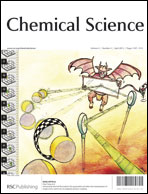Catalytic metallodrugs were used to oxidatively cleave HIV-1 Rev Response Element RNA (RRE RNA), and the mechanisms of RNA cleavage were studied using a combination of matrix-assisted laser desorption/ionization-time of flight mass spectrometry (MALDI-TOF MS), fluorescence spectroscopy, and gel electrophoresis. The metallodrugs, which contained combinations of the transition metals Fe2+, Co2+, Ni2+, and Cu2+ and the Rev-coupled chelators DOTA, DTPA, EDTA, NTA, tripeptide GGH, and tetrapeptide KGHK, bind to and cleave HIV RRE RNA through heretofore unknown oxidative mechanisms. The broad spectrum of metal catalysts and co-reagents provided a means for systematic variation of oxidative reactivity without significant perturbation of binding between catalyst and RNA. Detailed MS analyses were used to monitor formation of RNA fragments containing terminal 2′,3′-cyclic phosphate (2′,3′-cPO4), 3′-phosphate (3′-PO4), 3′-phosphoglycolate (3′-PG), 5′-hydroxyl (5′-OH), 5′-phosphate (5′-PO4) and other nascent overhangs at sites of cleavage. The distinct overhangs corresponded to distinct mechanisms of oxidative hydrogen-abstraction (H abstraction), hydrolysis, and/or endonucleolysis, allowing a dissection of the contributions of various mechanisms of oxidative cleavage. Rapid co-reactant- and catalyst-dependent formation of fragments containing terminal 3′-PG, 3′-PO4 and 5′-PO4 overhangs appeared to be initiated primarily by H abstraction events. The standard thiobarbituric acid (TBA) assay was employed herein in a novel usage to monitor the formation of base 2-hydroxypropenal products produced by 4′-H abstraction in RNA. Formation of an adduct with TBA was monitored by fluorescence, and its quantification correlated with the formation of 3′-PG monitored by MALDI-TOF MS, confirming oxidative 4′-H abstraction as a major mechanism of rapid catalyst-mediated cleavage of RRE RNA. Rapid formation of 3′-PO4 overhangs was most likely a result of 5′-H abstraction. Apparent rates of formation of 3′-PG (a unique product of 4′-H abstraction) at differing nucleotide positions within the RNA were used to triangulate probable 3D positions of metal centers and establish the distance-dependence of 4′-H abstraction for certain catalytic metallodrugs.


 Please wait while we load your content...
Please wait while we load your content...